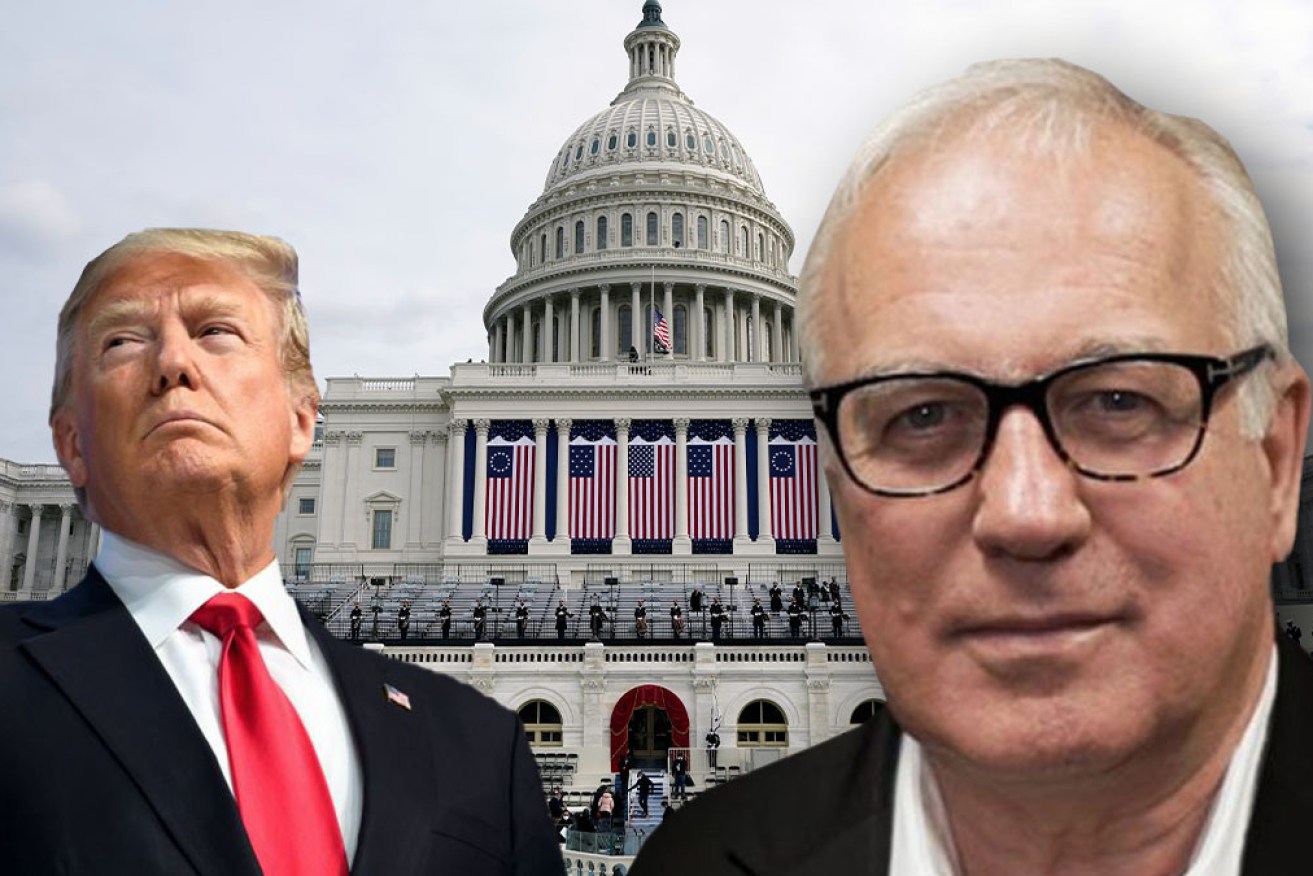Alan Kohler: The battle for America’s heart, soul and future


Like Ronald Reagan before him, Trump's tax-cutting boosted US debt. It's a lesson Republicans still haven't grasped. Photo: TND
In return for allowing the US government’s debt ceiling to go up, the Republican Party wants stricter work requirements for those on welfare. The Republican Speaker of the House of Representatives, Kevin McCarthy, said it’s a “red line”.
It also wants cuts to Temporary Assistance for Needy Families, which provides welfare payments to families with children in poverty, and the Supplemental Nutrition Assistance Program, which used to be called “food stamps” and helps low-income people buy food.
The debt ceiling was breached on January 19 largely because of the Trump Administration’s Tax Cuts and Jobs Act of 2017, which cut company tax from up to 39 per cent to a flat rate of 21 per cent, and cut taxes on high-income earners.
In the first two years, two-thirds of the benefit of those personal income tax cuts went to the top 20 per cent of taxpayers and they got 100 per cent of the benefit after that.
The debt ceiling was increased or suspended three times during Trump’s presidency without a peep from either side of politics in Congress. Now the Republicans are threatening to force America to default on its debt if there isn’t a crackdown on welfare for the poor.

Ronald Reagan’s paint-by-numbers patriotism obscured the immense damage of his economic policies. Photo: Getty
The welfare reforms being demanded by Republicans are estimated to save $US120 billion over 10 years. The Trump tax cuts cost $113 billion in one year and burst the debt ceiling.
And while Trump and Congressional Republicans asserted that the Tax Cuts and Jobs Act would actually reduce the deficit by growing the economy – the same argument made by Reagan in 1981, when he cut taxes for the wealthy and started the US on its disastrous path of rising deficits – it did nothing of the sort. Neither did Reagan’s.
And, of course, the Reagan experience did nothing to dissuade today’s Republicans from doing it again, because the point is not to grow the economy or reduce the deficit, but simply to cut the taxes of their donors and increase their wealth, which Republicans have been doing steadfastly for 60 years.
Since John F Kennedy took office in 1961, US government debt has grown from $289 billion to $30.9 trillion, a compound annual growth rate of 7.8 per cent.
Tempted to hope for the worst
During that time there have been 12 presidents – six Republican and six Democrat. The average increase in debt under Democrat presidents was 29 per cent; under Republicans, 78 per cent.
Republicans may now be flirting with causing a default because they think the financial chaos and recession that result would improve support for them, since they are the party of chaos and resentment.
They might be right, and it’s actually a bit tempting to hope for default so America might have to finally face what kind of country it really is – whether it’s a plutocracy/kleptocracy or the progressive democracy that most of the people actually want.
Then again, best not: A US debt default would reverberate around the world and affect everyone, possibly worse than the GFC that America also caused in 2008, and it probably wouldn’t be politically decisive within the US either.
Each debt-ceiling crisis is a battle for America’s soul, especially the ones in 2011 and 2013, but this one is bigger and more perilous because of the arrival of Donald Trump.
Trump has successfully fertilised and harvested the discontent that has resulted from decades of growing inequality and unfairness, and is still doing it.
The US is the headquarters of global capitalism and a superpower because it has been able to create both an enormous government and a military with global reach at the same time as enormous private wealth, first from oil, then manufacturing and more recently from technology.
The rich get richer
That is being reinforced again this year with the boom in artificial intelligence, which has underpinned huge gains by tech stocks and another round of enrichment for the already wealthy.
Household income has been increasing more slowly than wealth creation, there is a growing concentration of wealth along with increasing poverty, and the health system fails spectacularly to care for the majority of people.
At the same time, social cohesion is breaking down because modern ideas like abortion and sexual diversity are bumping against America’s religious hegemony, with the result that bottom-up cultural change is described as “woke” and resisted from the top.
And then there are the guns. In 134 days so far this year there have been 185 mass shootings of four or more victims, leaving 254 dead and 708 wounded. How can any country function properly with that going on?
Meanwhile, President Biden has been in Hiroshima for the G7, before skipping Port Moresby and Sydney and rushing back to Washington for more wrangling over the debt ceiling.
They’ve gone back to focusing on the G7 because the G20 includes Russia and China, and they’re on the outer these days. The peacefully optimistic days of 2014, when the G20 was hosted by Tony Abbott in Brisbane, seem a long time ago.
In Hiroshima, the G7 – now described as the “steering committee’ of the Free World – is talking about “de-risking China” rather than decoupling from it.
Terrific! When are we going to talk about de-risking America?








